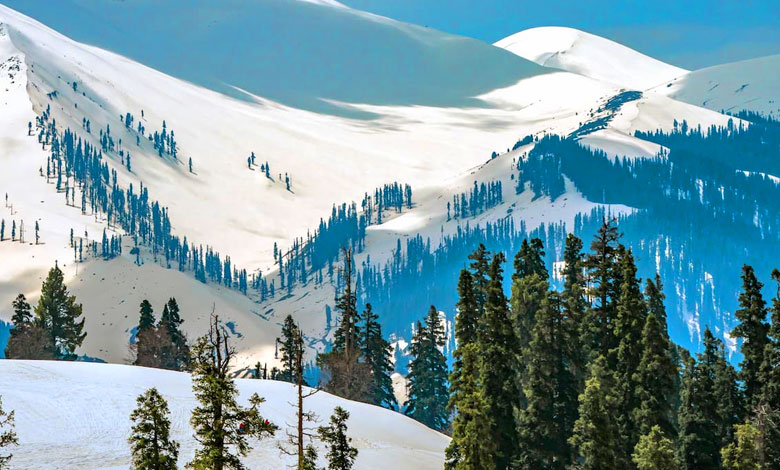Intense Cold Wave in Jammu & Kashmir: Srinagar Records Minus 4.8°C, Snowfall Expected in Higher Reaches
Jammu & Kashmir continues to experience an intense cold wave with Srinagar recording minus 4.8°C. Snowfall is expected in higher reaches, while the region faces harsh winter conditions during the Chillai Kalan period.

Srinagar: The cold wave continues to grip Jammu and Kashmir with temperatures plummeting across the region. Srinagar, the summer capital of Jammu & Kashmir, recorded a chilling minus 4.8°C on the morning of January 15.
This marks another day of extreme cold in the Kashmir Valley, which is currently experiencing the harsh winter period known as ‘Chillai Kalan’.
Table of Contents
The period, which began on December 21, is set to last until January 30, and is marked by freezing temperatures and severe weather conditions.
Weather Forecast: Snowfall Expected in Higher Reaches
According to the Jammu and Kashmir Meteorological Department (MeT), the weather in the region is likely to remain cold over the next few days, with cloudy skies and light snowfall predicted for isolated higher reaches on January 16.
Srinagar and other parts of the Kashmir Valley are expected to see snowfall, but mainly at higher altitudes.
The MeT office also issued a weather advisory for tourists, travelers, and transporters, advising them to follow the traffic and administrative advisories to ensure safety during the snowfall.
The weather forecast for the coming days is as follows:
- January 15-16: Cloudy skies with light snowfall expected at isolated higher reaches on the morning of January 16.
- January 17-19: Generally cloudy skies, with no significant change in temperatures expected.
- January 20-21: Cloudy weather with light snowfall likely at scattered places, particularly at higher altitudes.
Freezing Temperatures: Impact on Daily Life
The extreme cold has been particularly harsh on the local population, with Srinagar and other regions in the Kashmir Valley seeing temperatures well below freezing. The recorded minimum temperatures across different areas of the state are as follows:
- Srinagar: -4.8°C
- Gulmarg: -7.4°C
- Pahalgam: -8.4°C
Meanwhile, in the Jammu Division, there was an improvement in weather conditions. Jammu City recorded a minimum temperature of 6°C, with clear sunshine throughout the day. Other towns in the region saw the following minimum temperatures:
- Katra (Mata Vaishno Devi base camp): 6.8°C
- Batote: 2.1°C
- Banihal: -1.5°C
- Bhaderwah: -0.7°C
Despite the relative warmth in the Jammu region, the Kashmir Valley continues to face the effects of intense cold, with severe conditions making daily life challenging for locals. Water pipes and water tanks in the region freeze overnight, causing water shortages. Lakes, streams, and ponds have partially frozen, making it difficult for boatmen and fishermen to navigate the waters.
Also Read | Intense Cold Wave Grips Jammu and Kashmir: Night Temperatures Dip Further
‘Chillai Kalan’: Kashmir’s 40-Day Harsh Winter
The Chillai Kalan period, which is the harshest part of the winter season in the Kashmir Valley, continues to affect daily life.
This 40-day cold spell is known for freezing temperatures, with water sources freezing overnight. The extreme cold makes it difficult for people to carry out basic tasks, as many have to defrost water pipes in the morning to access potable water.
During this time, locals rely heavily on traditional methods of keeping warm, such as wearing the ‘Pheran’, a loose tweed overgarment, and using the ‘Kangri’, a traditional eastern firepot woven in a willow wicker basket. These age-old practices provide some relief against the biting cold.
Health Risks: Cold-Related Illnesses and Precautions
While the cold provides a unique winter experience, it also poses serious health risks, particularly for the elderly and children.
Doctors have warned that prolonged exposure to extreme cold can cause constriction of blood vessels, which may lead to myocardial infarction (heart attacks). Those suffering from heart conditions are at an increased risk of heart attacks and heart failure during such extreme cold spells.
Local authorities have advised people to take extra precautions, especially during the early morning hours and late evenings when the temperature is at its lowest. Adequate protection, including warm clothing, the use of heaters, and keeping indoor spaces warm, is essential for survival during this period.
